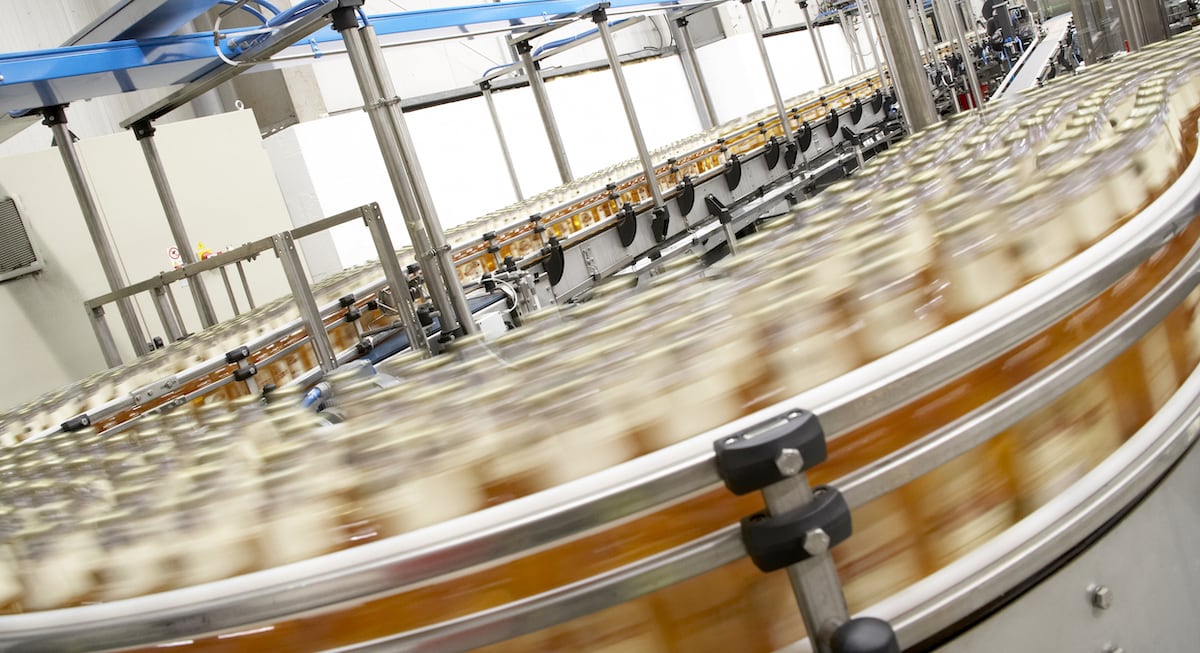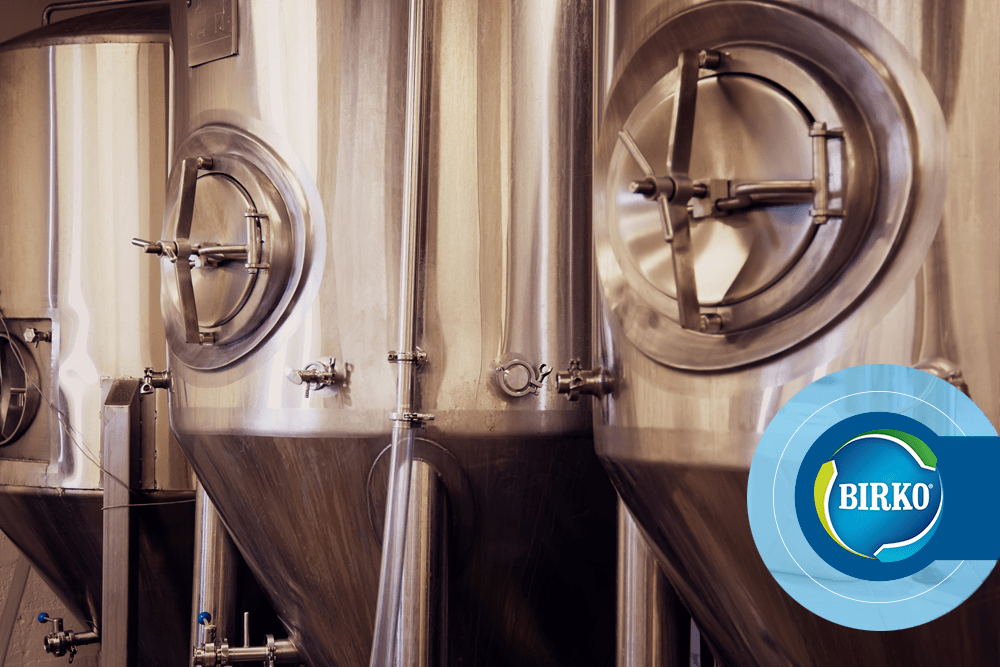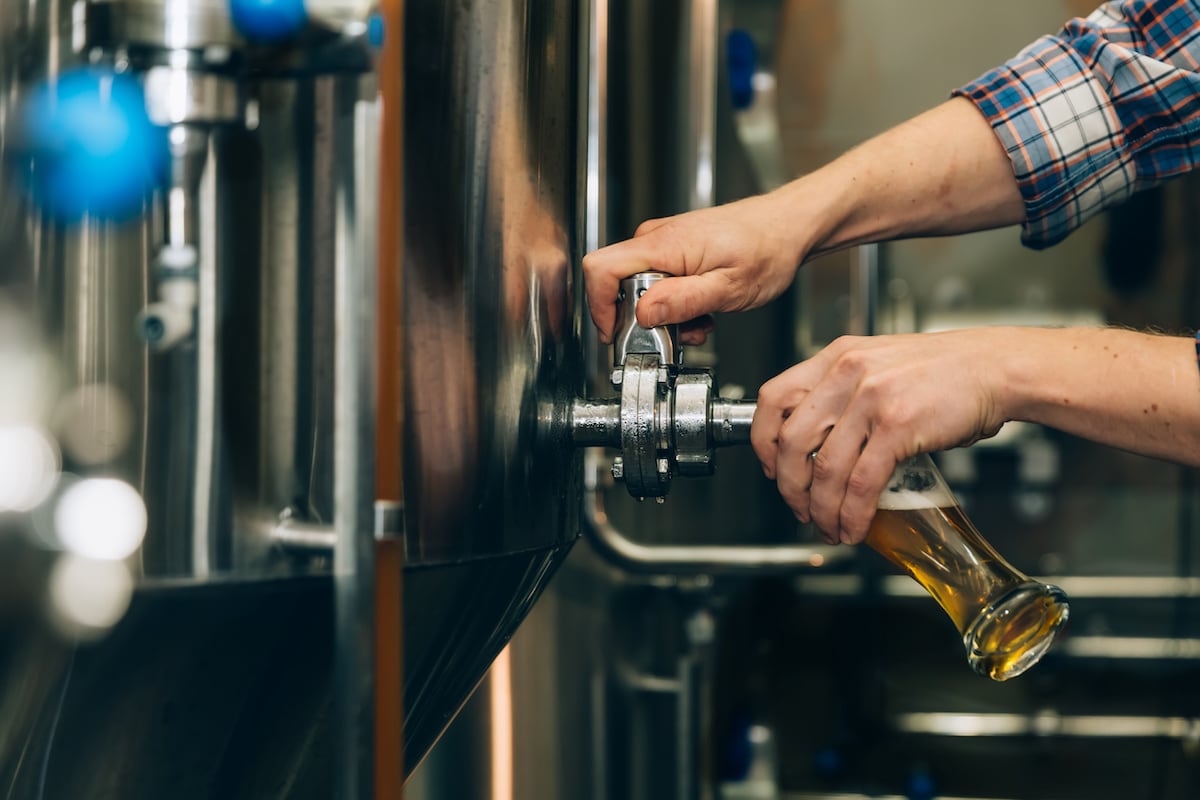Don’t climb in the kettle to remove soil after a CIP – boost your caustic or alkaline cleaner with hydrogen peroxide instead!
By using caustic and hydrogen peroxide in the same solution, you can simply rinse soil away instead of accepting protein building-up in the brewhouse as ‘just the way it is.’
In this webinar I gave for the Colorado Brewers Guild, you can learn more about how to improve your brewhouse cleaning using caustic and hydrogen peroxide.
Click here to watch the webinar
Keep reading below for some of the questions I received from brewers like yourselves about this new approach to cleaning:
Should I continue to use PAA to sanitize my brewhouse?
Yes. Birko’s approach is cleaning and sanitizing are two separate steps. You must clean first because you can’t sanitize a dirty surface. You still want to sanitize your brewing equipment with PAA, especially on the top side – fermenters, heat exchangers, etc.
Can PAA also be used? Can you compare the performance and pricing using PAA vs H2O2 with caustic or alkaline cleaner?
Answer: Yes, but peracetic acid (PAA) is about 3x the cost per gallon, and provides no additional cleaning benefit in this case. Pur-Ox contains considerably more hydrogen peroxide than Birk-Ox and is 1/3rd the price per gallon.
How does using caustic and hydrogen peroxide for CIP impact wastewater BOD, COD, pH, TSS with respect to treatment facility requirements?
This approach does not change that. The main thing want to do is do pre-treat the wastewater. According to the EPA, the pH must be between pH 6-10. Check your local wastewater regulations. Using this approach, you’ll probably use less chemical, which means less chemical going down the drain.
Can this mixture be run through a heat exchanger?
Yes this approach works really well in the heat exchanger. The bubbling effect of the hydrogen peroxide gets into all of the nooks and crannies. Make sure the pH is at least 12.5, and when doing the actual cleaning, the solution is only good for about 30 minutes.
Can I use caustic and hydrogen peroxide for keg washing?
Absolutely, especially for unfiltered beers, the hydrogen peroxide addition helps remove protein and light beerstone deposits. The pH and hydrogen peroxide levels must be kept in the proper amounts. The pH needs to be 12 or higher, and the hydrogen peroxide must be re-dosed every half and hour. If the pH will not go above pH 12, it is time to discard the solution and start fresh.
Can this technique be used with a regular (old fashioned) spray ball, or hose, or foaming water gun?
Yes, no, and no. It works well with regular, old fashioned spray balls because the hydrogen peroxide helps overcome the static (non-rotating or spinning) nozzle cleaning problem. It is not recommended to be run through a hose or foaming water gun since the concentrates cannot be safely combined.
What kind of spray ball do you recommend for this CIP of the mash and/or kettle to properly remove the soil? Gallons/minute? Pressure?
Ideally, spinning or rotating nozzles are best but the gallons/minute and pressure required to clean the tank is highly dependent on the size of the vessel.
What compatibility does this have with gaskets (BUNA, EPDM, Viton, etc.)?
BUNA does not hold up well to hydrogen peroxide, EPDM is better, Viton or Teflon gaskets are the best for this type of cleaning.
How does this work with WAY-VOS?
Yes, WAY-VOS and Pur-Ox work well together, especially for cleaning fermenter cleaning. For brewhouse cleaning, WAY-VOS is not recommended for calandria cleaning, because it does not contain as much of the additives that Cir-Q-Late contains for removing baked-on soils. Trust me, you do not want a clogged calandria!
My former chemical supplier indicated that there was more than just peroxide in their oxidizer additive. Is this true, and would they help?
Answer: Yes and No. All hydrogen peroxide and peracetic acid compounds are stabilized with chelators or sequestrants to help maintain shelf-life but they do not assist in cleaning. If a chemical provider is telling you that their hydrogen peroxide is way better than the competitor’s version I would ask, “Why?” Is there a lot more hydrogen peroxide? If so, how much more? Is the shelf life better? If so, how much longer?
To hear me go into more detail on these questions and brewhouse cleaning using caustic and hydrogen peroxide, click here. Or you can read this article I wrote for the New Brewer on the topic.
 Dana Johnson, Technical Director, Craft Brewing, Birko, can be reached at [email protected] or (303) 289-1090.
Dana Johnson, Technical Director, Craft Brewing, Birko, can be reached at [email protected] or (303) 289-1090.









